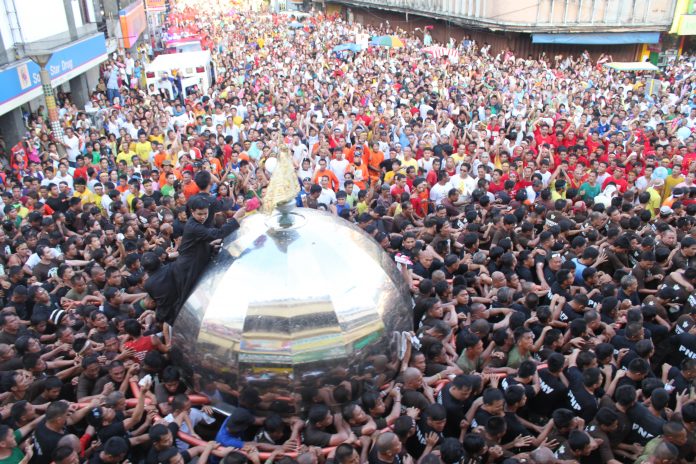Changes to the traditional celebration of the Peñafrancia Festival in the Archdiocese of Caceres will continue to be implemented for the second year due to the pandemic.
“Given the fact that the COVID-19 pandemic continues to be a threat to public health, it is of higher value to celebrate the Peñafrancia Festival in solemn thanksgiving to our Ina who has always protected us from harm,” read a circular from Archbishop Rolando Tria Tirona of Caceres.
The prelate appealed to the faithful for cooperation and understanding and to look at the situation as an opportunity to strengthen their faith through prayers and reflections with their families.
“We recognize the longing of many devotees for the traditional devotional practices,” said Archbishop Tirona, adding that such practices “have contributed to the propagation of devotion.”
“This year, the fiesta will unite devotees in prayer and reflection while we strictly observe health protocols and other precautionary measures,” said the prelate.
This will be the second year that there will be no “traslacion,” the religious procession attended by millions of devotees, and no fluvial procession during the celebration of the Feast of Our Lady of Peñafrancia.
The Archdiocese of Caceres is celebrating this year the 311th year of the feast.
Every year, millions of devotees join the religious procession of the wooden statue of the Virgin Mary, a copy of the original image in Spain that has been venerated in the Philippines’ region of Bicol since the 1700s.
A Spanish priest supposedly ordered a local artisan to carve an image patterned after a picture he carried with him and started the devotion to Mary, called “Ina” or mother, by the locals.
The deep-rooted devotion to the Virgin Mary has been handed from one generation to another for the past 300 years.
Every year, devotees pass through an 11-meter high arch dedicated to the Our Lady of Peñafrancia to signify their devotion to the Blessed Mother.
Barefoot men called the “voyadores” would then carry the image in a religious procession in an annual ritual of piety and religious fervour.
They would bring the image of the Virgin Mary from a shrine to the river for a “fluvial procession,” which usually lasts five hours, until it reaches a dock near the city’s cathedral
The “voyadores” would race each other to carry the palanquin in the belief that doing so would cleanse their sins and heal their illnesses.
No women are allowed to board the virgin’s pagoda or float supposedly because no other woman except the Our Lady of Penafrancia is the center of the celebration.
This belief has spawned the superstition that if a woman boards the pagoda, it would sink. No politician is allowed on the pagoda.









